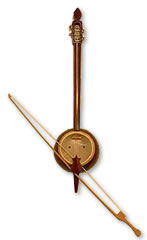The Akitu festival is one of the oldest recorded religious festivals in the world, celebrated for several millennia throughout ancient Mesopotamia.
It is also known as Khab-Nisan (First of April) or Resha d Sheta(Head of the Year)
During the festivities, the creation epic of Enûma eliš was recited, while the people sang all kinds of hymn and songs(like in Nawruz)
It was Traditionally Celebrated on 21 March,but do to changes in the calender the date now is April 1.
in the Julian calendar, vernal equinox moved gradually away from 21 March. The Gregorian calendar reform restored vernal equinox to its original date, but since the festival was by now tied to the date, not the astronomical event, Kha b-Nisan remains fixed at 21 March of the Julian reckoning, corresponding to 1 April of the Gregorian calendar.
When the Medes and Scythians (aided by the Babylonians) attacked Assyria and its capital Nineveh, the Medes came in direct contact with Assyrian civilization.
Persian writers have tried hard to credit the origin of their New Year to the Zoroastrian religious teachings historical evidences indicate that it was borrowed from the ancient Assyrians and Babylonians.The Assyro-babylonian new year originated during the Sumerian period in mid third millennium B.C.. It was the most important religious ceremony which was observed on the day of the spring equinox (March 20-21) considered as the day of creation and also of the rebirth of the nature.

Greek historians repots about Alexander the Great indicate that the Persian new year celebrated in 330 B.C. shared common elements with that of the Assyro-Babylonians. When on the spring equinox of that year Alexander the Great participated in the Persian new year ceremonies he was asked to go through a ritual ordeal which consisted of fighting a "monstrous death demon" and emerge victorious. His participation in this event renewed his office as Ahura Mazda's vice regent on the earth.( (Green, Peter "Alexander of Macedon, 356-323 N.C. A historical biography" copyright 1991, p. 314.)
The fighting of the "monster of death" brings to mind the Mesopotamian creation story of "Enuma Elish" which was recited and reenacted during the Assyro-Babylonian new year
(Alexander Heidel, "The Babylonian Genesis, The Story of Creation", The University of Chicago Press 1951 pp. 16-17.)
THE ASSYRian ritual of royalt
The Assyrian and Babylonian king was considered as the viceroy of god on earth and every new year he had to go through a ritual which led to his dethroning by the high priest in the presence of Marduk or Assur and after confessing he 'had not sinned against the land and had not neglected the divinity' his crown was returned to him by the high priest and his kingship was extended for another year. (Grankfort, Henri "Kingship and the Gods, as Study of the ancient Near Eastern religions", Chicago University Press 1948 p.320)
The PErsiasns copied this and during the time of Alexander the great this concept seems to have bene well practiced,even during the the Sassanian dynasty \ the Persian kings were considered as the regents of the Ahura Mazda and were known as "Bokh" or "Minu Chehre Az Eazadon" i.e. 'related to god', also 'Farah Eizadi' i.e 'guided by god"
(Nafissi, Saeid "Masseheyat Dar Iran", Noor Jahan Tehran, Iran 1964 pp. 40-41)
Bas-reliefs left behind by some Sassanian kings show them receiving their crown form the Mobed Modbedan i.e. the Zoroastrian high priest.
the practice of the Sacred Marriage of the Assyro-Babylonian new year intended to insure the fertility of the land became part of the Persian New year celebrations also.
.the [Achaemenian] king spent the first night of the New Year with a young woman. The offsprings of such union would be sent to a temple and they would normally end up as high-ranking religious officials.
(Massoume, "Iranian New Year Nowruz", @ ersia.org/Culture/nowruz.html, May 2004)
Cyrus the Marduk worshipper
One isncritption states
-"Nabunidus was heretical; he changed the details of worship. He was also an oppressor....But Bel-Marduk cast his eye over all countries, seeking for a righteous ruler.. Then he called by name cyrus, King of Anshan and pronounced him ruler of the lands."
Burn, Andrew Robert "Persia and the Greeks, the Defense of the West 546-478 B.C.", Stm Marin's Press, Inc. 1968 p. 58.)
In another inscription Cyrus declares that Marduk the great lord was pleased with his deeds and sent friendly blessings to 'the King who worships him' and his son Cambyses.
(Prichard p.207)
The First mention of a Persian king participating in the Babylonian New Year Festival was when In 538 Cambyses the son of Cyrus was installed as the king of Babylon and on the 4th day of Nissanu [March 24 of the western calendar] he went through the historic New Year ritual of paying homage to Bell [Marduk] and Nabu thereby he was appointed officially the viceroy of Marduk in Babylon with a headquarter in Sippar.
There is no historical documentation to show that either the Medes or the Persians celebrated the Spring Equinox as New Year before the conquest of Babylon.
If the Persian Nowruz had a Zoroastrian origin, as some claim, elements which were not of the Persian religion would not have been incorporated into it
It was of the utmost beenfit for Persian kings to adopt Akitu so that theyre Legitmacy among Babylonains would stay .














